Updated
Everything you need to know about JBL speakers
Here is your ultimate guide to JBL's speakers. What models are available? What sets them apart? How do you pair a JBL Charge 3 to a JBL Flip 5? How do you load JBL Go? We go through all your questions and give you the answers you need as well as which JBL headphones pair well with them.
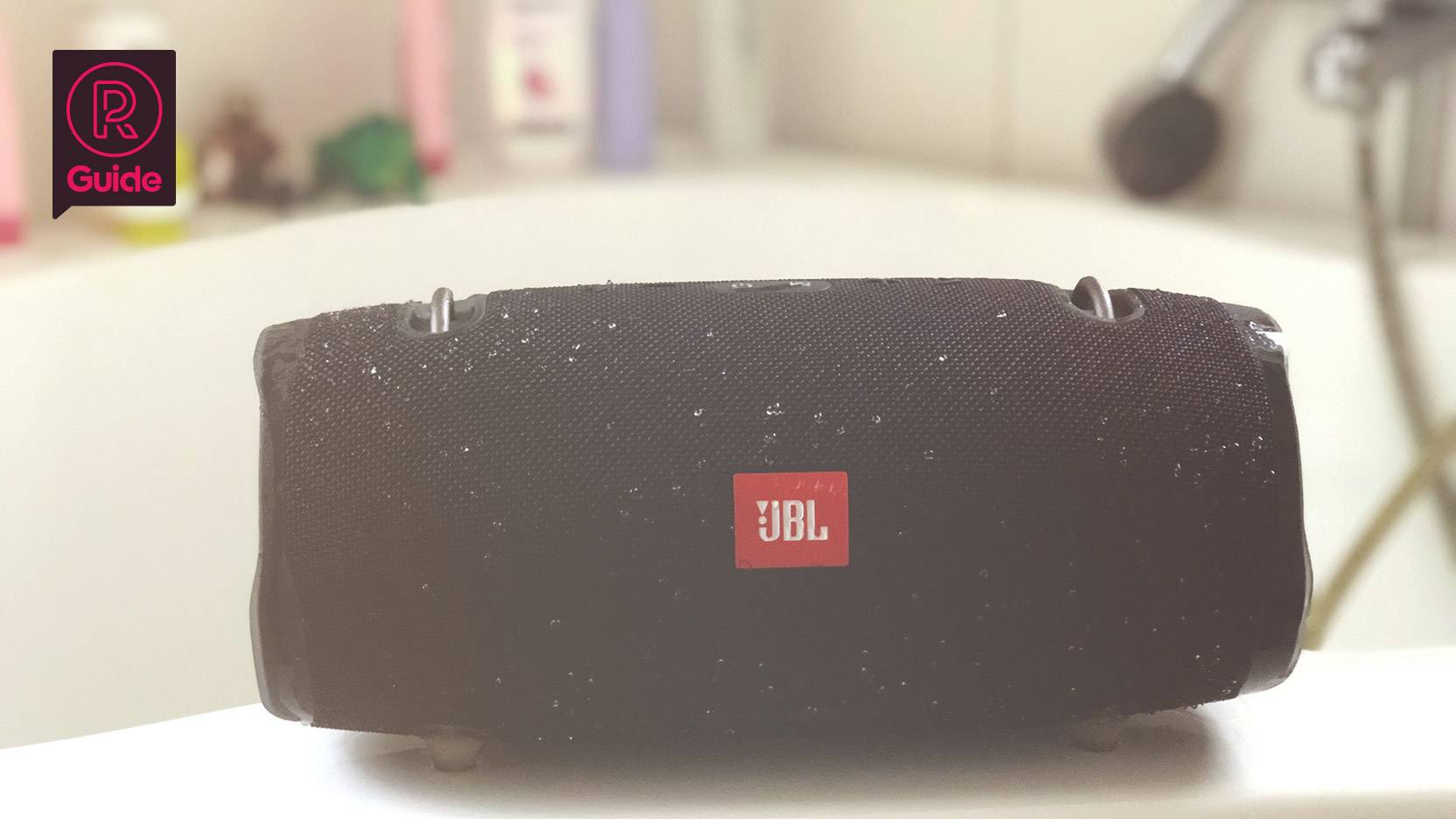
JBL is a well’known speaker manufacturer. Founded in 1946, JBL is an American company that now sells its speakers all over the world.
The abbreviation JBL stands for James Bullough Lansing; the name of the person who started the company. Today the owner is South Korean Harman International Industries, which is part of Samsung.
What does JBL have to offer?
JBL are known for their audio products. In their range you can find everything from ordinary headphones and speakers to waterproof sound products and smart speakers with built-in voice assistants. The latter mean you can ask questions of the speaker and get answers or give it commands, for example, ask what the weather is like today or ask it to play a particular song. This type of functionality can be found in the JBL Link series.
JBL sell speakers in all sizes and shapes. But the most well-known are their portable speakers in the waterproof Charge and Flip series. JBL also offer the Xtreme series, slightly smaller speakers in the Go and Clip series and a number of other special speakers that include light effects when you use them.
Sound quality correlates a lot with the price and size of the speakers, much as you would expect. It’s more difficult to create good sound in small – and especially flat – devices. So you get a lot more oomph (and better sound quality) from a JBL Xtreme 2 than you would from a JBL Go. Which model you should choose, however, doesn’t just depend on sound quality. You’ll also want to consider other aspects, such as how portable you want the speakers to be. JBL Go, for example, are great for those who travel a lot because they barely take up any space and are very lightweight.
Clip 3 is even better in that respect because it is ultraportable and can even be hung up from a tree branch or the like. Clip 3 also has twice as long battery life (10 hours), but then it’s also a fair bit more expensive. At the time of writing, you have to pay around £60 for a Clip 3, compared to Go 3, which is around £40 or so. Here you can read what we thought of the Go 3 when we tested it this summer.
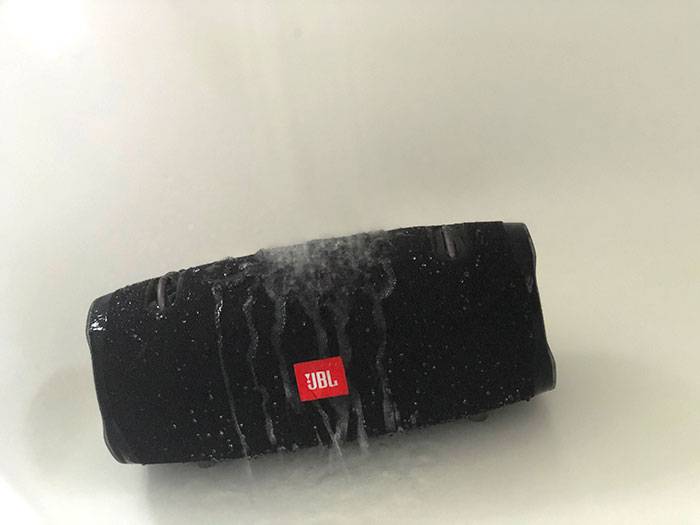
Another important aspect for some people is how waterproof a speaker is. Many of JBL’s speakers have IPX7 rating, which means they can handle being in one metre deep water for up to 30 minutes without being damaged. So if your speaker falls in the swimming pool, this is a great advantage.
Battery life is also important, especially if you travel a lot. For instance, compare the JBL Flip with the JBL Charge. The Charge 3 and its successor, the Charge 4, which are only slightly larger size than the JBL Flip 3 and JBL Flip 4, have almost twice as long battery life. That’s a pretty big difference between those two product lines.
The sound in the Charge series also has a bit more power. However, all these speakers are significantly larger than Clip 3 and Go 2 and thus a bit worse from the portable point of view, but not so large that they’re difficult to take with you – provided you’re not planning to climb a mountain. Here you can read our test of the JBL Charge 5 and see how it stands up to the competition.
Party box and soundbar
In the autumn of 2019, JBL supplemented its range of speakers with some new models. One of them is a connected audio device that goes by the name JBL Soundbar. This supports Google Assistant and is also equipped with the Android TV operating system.
The soundbar offers a very resilient sound with a strong bass and has a slim sort of design with a sober finish in grey and black. For those who want a smart TV but have an old one, Android TV is an extra welcome addition, with a range of apps and services.
Another release from JBL was a speaker designed for parties. This product, called Partybox 1000, delivers a really solid sound, and it has also been equipped with light effects. In other words, you get the entire disco in a single product.
The light show can be controlled with the help of the associated LED-equipped bracelet DJ Party Band. And it’s possible to pair the speaker with another speaker both wirelessly or with a cable (RCA). One extra detail is that the speaker is also provided with an input for a microphone or musical instrument. Music playback can take place via both Bluetooth or 3.5-millimetre input, and the output power is as high as 1100 watts.
Choose between JBL speakers
Here we go through what distinguishes the different JBL speakers in each product series.
JBL Flip 4, 5 or 6 – which one suits you?
Flip 6 is the latest addition, and it has a fair few new ideas. Separate treble and reworked sound technology make the soundstage both clearer and more powerful. JBL have also bumped up the IP rating from IPX7 to IP67, which means that in addition to being waterproof at the same depth as Flip 5, it’s also dustproof.
Another important addition is that Flip 6 has been upgraded to Bluetooth 5.1 (Flip 5 had Bluetooth 4.2). Flip 6 is also available in a number of new colours.
There’s no doubt that the Flip 6 is the best of the three units and, given the improvements that have been made, it is also the best buy.
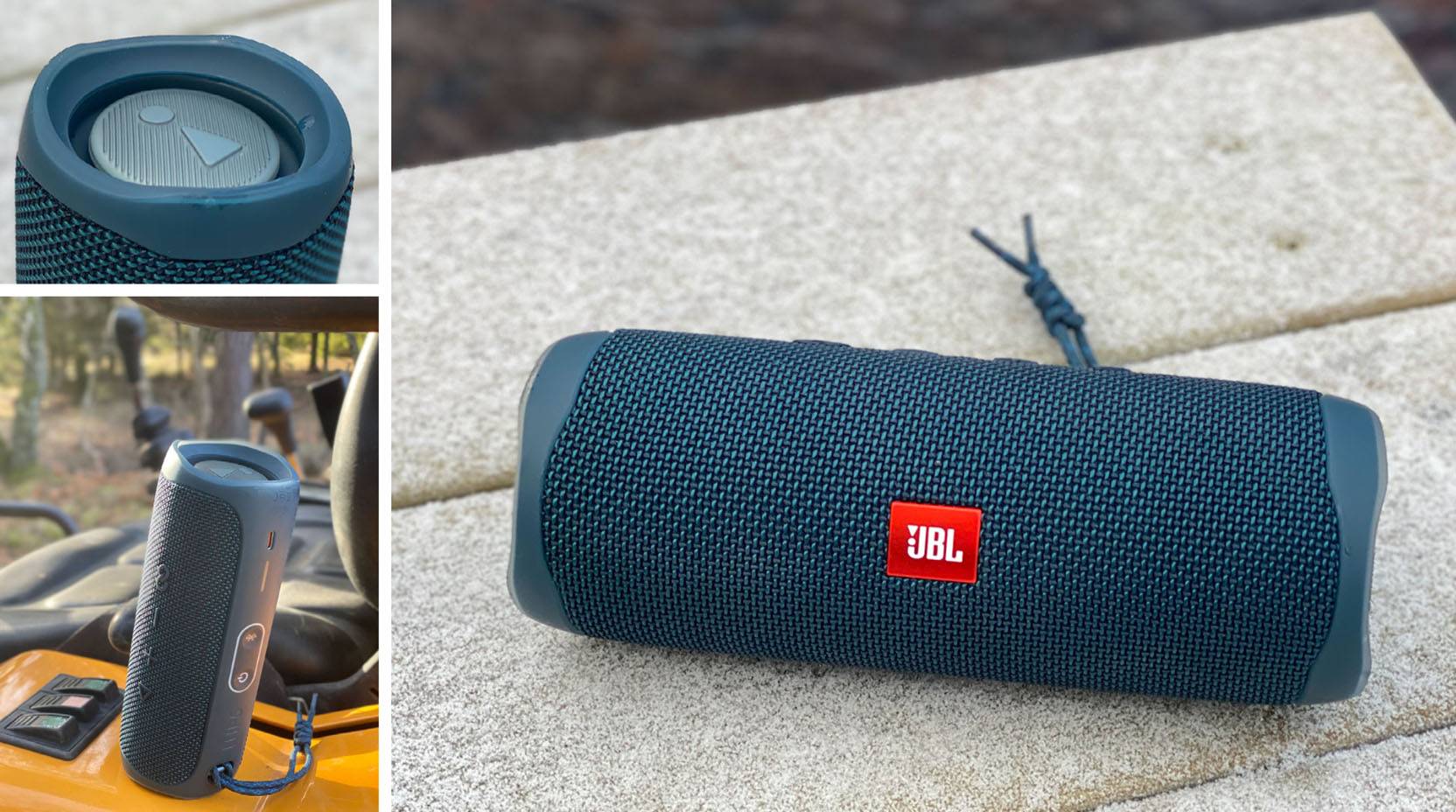
The gap between the Flip 4 and Flip 5, on the other hand, isn’t quite so clear – at least at first glance. There are differences, but you need to look harder to see what they are.
One of the most important things when it comes to speakers is, obviously, the sound quality, and there the Flip 5 does quite a lot better than the Flip 4. In addition to better bass pressure, it also produces higher volume and a far more detailed soundstage across the entire frequency spectrum.
But this is essentially also the only advantage of the Flip 5 compared to the Flip 4 (albeit a very large and weighty advantage). Charging time is slightly faster on the Flip 5, which has also been gifted with a marginally bigger battery, but otherwise most things are the same.
On the downside, the Flip 5 lacks a classic 3.5-millimetre AUX input, which can be a dealbreaker for many users who like to connect their audio source with a cable rather than via Bluetooth. Another downside is that whilst the Flip 5, like the Flip 4, can be connected to several speakers, they can only be speakers from JBL's Party Boost series.
In terms of water resistance, it is on par with the Flip 4.
To make your choice a bit more difficult, the two speaker models are also the same price.
If the sound is more important than everything else, if you don’t need an AUX input and you don’t want to be able to connect your Flip 5 with anything other than Party Boost speakers, the choice is a given. Otherwise, you should probably take a closer look at the Flip 4.
The predecessor, Flip 3: Compared to the Flip 3, the Flip 4 and 5 can both be connected to more devices. The Flip 3 can only play music on its own.

JBL Flip 6 – Ideal size for the beach
While the Charge and Xtreme are the slightly larger models – both still portable but not the first choice for a handbag – the JBL Flip 6 is perfect to carry with you. It can be hung on your backpack or easily packed in the picnic basket. For those of you who like to travel light, there are even smaller and more suitable alternatives. But if you’re just going to the beach or out on a picnic, the Flip 6 could be ideal. It’s water resistant, has good sound quality and 12 hours of battery life.
Charge 3, Charge 4 and Charge 5
You’d struggle to find any major differences between the Charge 4 and Charge 3. The few differences are mainly on the sound side and, most of all, at the top of the frequency spectrum.
The Charge 3 certainly sounds very good, but you may not appreciate the definition in the treble. Sometimes you also get the impression that the bass is suffocating the higher frequencies. JBL eliminated this problem with their Charge 4, which generally offers slightly better sound without losing its ability to produce real bass if required.
In terms of the design, basically nothing has changed and in terms of functions there are no differences at all. In terms of price, the difference is pretty small, and so we’d probably say that the much more balanced sound experience of the Charge 4 is worth an extra few quid, because sound is really what it's all about.
With the Charge 5, however, more has changed. Battery capacity is certainly the same as on the Charge 4 (20 hours), but you get a better sound. A new and more powerful bass is accompanied by a reworked treble that provides finer definition. There is also dedicated reinforcement of both the bass and treble, which is another advantage. Upgrading Bluetooth from 4.2 to 5.1 also guarantees a more stable connection.
So given that the price difference between the Charge 4 and Charge 5 isn’t very big, the Charge 5 is clearly the best choice.
JBL Xtreme 2 och Xtreme 3
The slightly larger speakers in the Xtreme series provide a real boombox experience. This is hardware that can deliver really loud and powerful sound with a lot of bass.
The Xtreme 3 is the latest addition to this series, and perhaps the most important change is that Xtreme 3 has been given an output power of 100 watts, which is a significant difference in volume compared to the Xtreme 2 at 80 watts.
Both models support Google Assistant and Amazon Alexa.
When it comes to Bluetooth, the Xtreme 3 has one clear advantage over Xtreme 2, as it is equipped with Bluetooth 5.1. The Xtreme 2 has Bluetooth 4.2, which isn’t bad, but it is slightly less reliable and stable.
Overall, the Xtreme 3 is louder and offers more modern technology, but the Xtreme 2 has dropped quite a bit in price, so it’s still worth a closer look. And do you really need 100 watts? Only you can answer that, but there’s no doubt that the Xtreme 2 is more affordable right now.
JBL Link Portable
JBL Link Portable is a newcomer to JBL's slightly more niche Link segment with AI speakers. These are devices in the style of Google Home, portable and waterproof. The idea is primarily that you should use them at home, but they are also portable too.
Link Portable is slightly larger than Amazon's Echo Plus. If that doesn’t tell you anything, it means that it weighs 735 grams and fits in a small bag without problems. Link Portable is waterproof down to a metre for up to 30 minutes, and the battery life is eight hours.
Given the compact format and the speaker’s rather modest appearance, it offers a surprisingly powerful sound, making it ideal as a portable AI speaker with Google Assistant support.
JBL Go 2 and 3
JBL’s smallest Bluetooth speakers aren’t something you get out when there’s a party. These are very small units that don’t provide a much bass to speak of.
The JBL Go 3 is the latest speaker in this series, and it has a new and slightly rounder design, but has also become both thicker and heavier than its predecessor, the Go 2.
Unlike the Go 2, the Go 3 isn't only water-resistant but also dust-resistant, and as with other new JBL speakers, it has also been upgraded from Bluetooth 4.2 to Bluetooth 5.1.
Sound quality isn't significantly better than on the Go 2, and the older model might be more interesting to some, as it has a 3.5-millimetre input, something which the Go 3 lacks.
How to pair JBL speakers with each other
Did you know that many of JBL’s speakers can be paired and play audio from the same audio source simultaneously? This way, you can either amplify the sound by adding multiple speakers in the same room, or play the same song in several rooms at the same time. Older speakers from JBL are equipped with a standard called Connect+ while newer devices such as the JBL Flip 5, Pulse 4 and Xtreme 3 have something called Partyboost.
It’s important to note that speakers with Connect+ and Partyboost can’t be connected together, something that will disappoint those who have invested in several older JBL speakers and want to be able to pair them with new ones.
The advantage of JBL developing a new standard is that it is significantly better. With Partyboost, the Bluetooth range is doubled, and the signal isn’t disrupted by obstacles, like it is with Connect +.
JBL have also stated that they won’t be rolling out any update that makes their older speakers compatible with their new ones. The pairing procedure is the same as before.
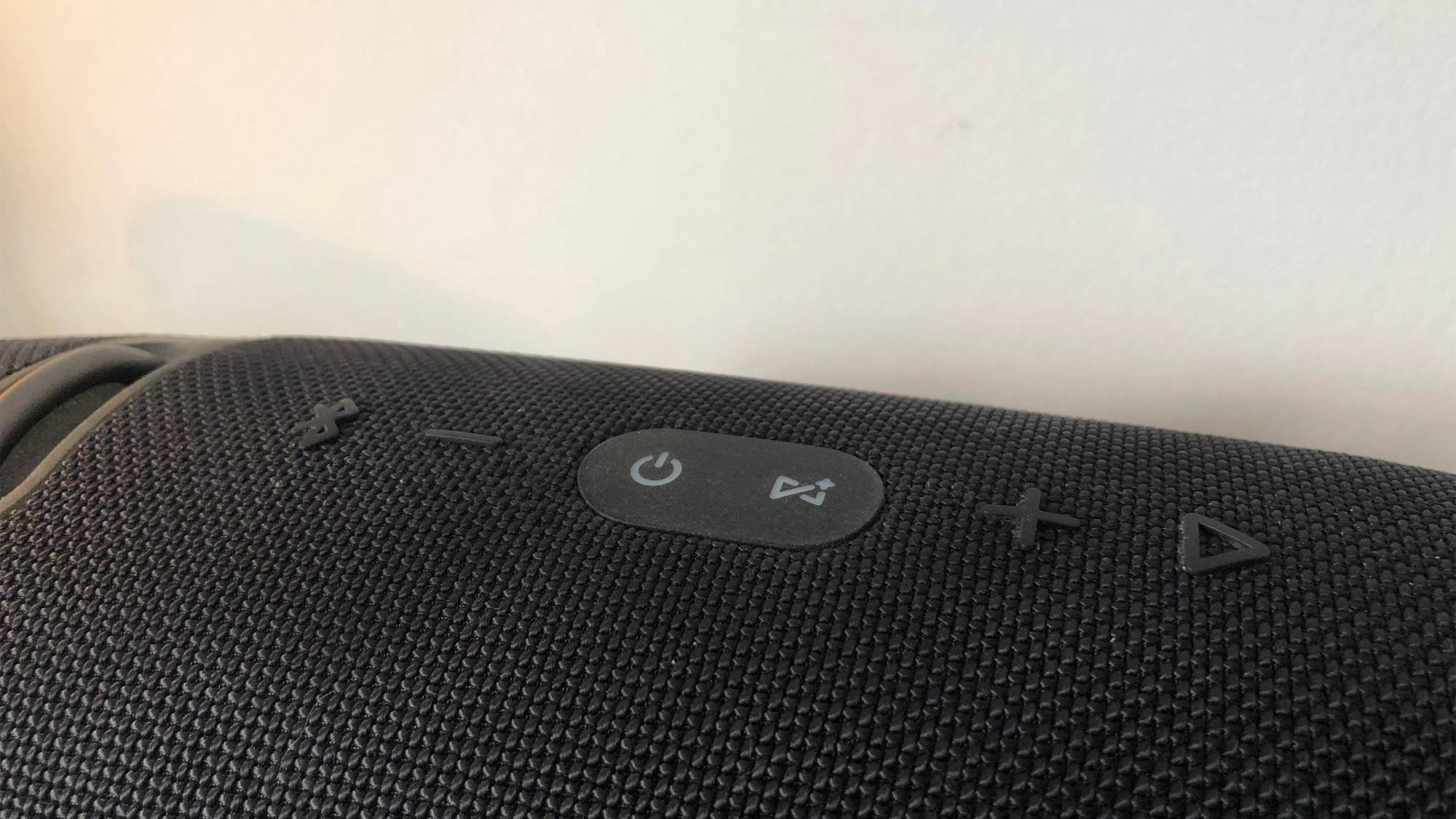 Caption: In the centre of the image is the hourglass icon used to connect multiple JBL speakers together.
Caption: In the centre of the image is the hourglass icon used to connect multiple JBL speakers together.
On each unit there’s an icon that looks like an hourglass with a plus sign in the corner, and it’s this that’s used to pair the JBL speakers to one another. However, one of the speakers must be connected to your music source in order for any sound to be played.
So start by connecting one of the speakers to your mobile phone by tapping the Bluetooth icon on one of the speakers and then turning on Bluetooth in your mobile phone settings. The speaker name will appear in the list of available devices. Click on it to connect them. It doesn’t matter if you're using iPhone or Android, the procedure is the same for both of these mobile operating systems.
With one speaker connected to a mobile phone, it’s time to pair the other speakers with the first one. Below you’ll find a detailed description of how to connect JBL Flip speakers to each other. But the method described is the same for all JBL speakers with Connect+ support.
How many JBL speakers can you pair at the same time? According to JBL, you can connect up to 100 compatible models.
How to pair JBL Flip 5 or Flip 4 to more speakers
Start by downloading the JBL app to your phone, and launch the devices you want to pair. In the app, connect the JBL Flip 5 or JBL Flip 4 with your phone via Bluetooth by following the instructions on your phone. Now that you have a music source connected to the speaker, it's time to connect this first speaker to the other speakers. On the back of the JBL Flip 4 – between the power button and the flap that covers the ports – is a button that looks like an hourglass with a plus sign. Press it. Locate the same type of button on the other speaker and press those as well. They’ll now pair with each other.
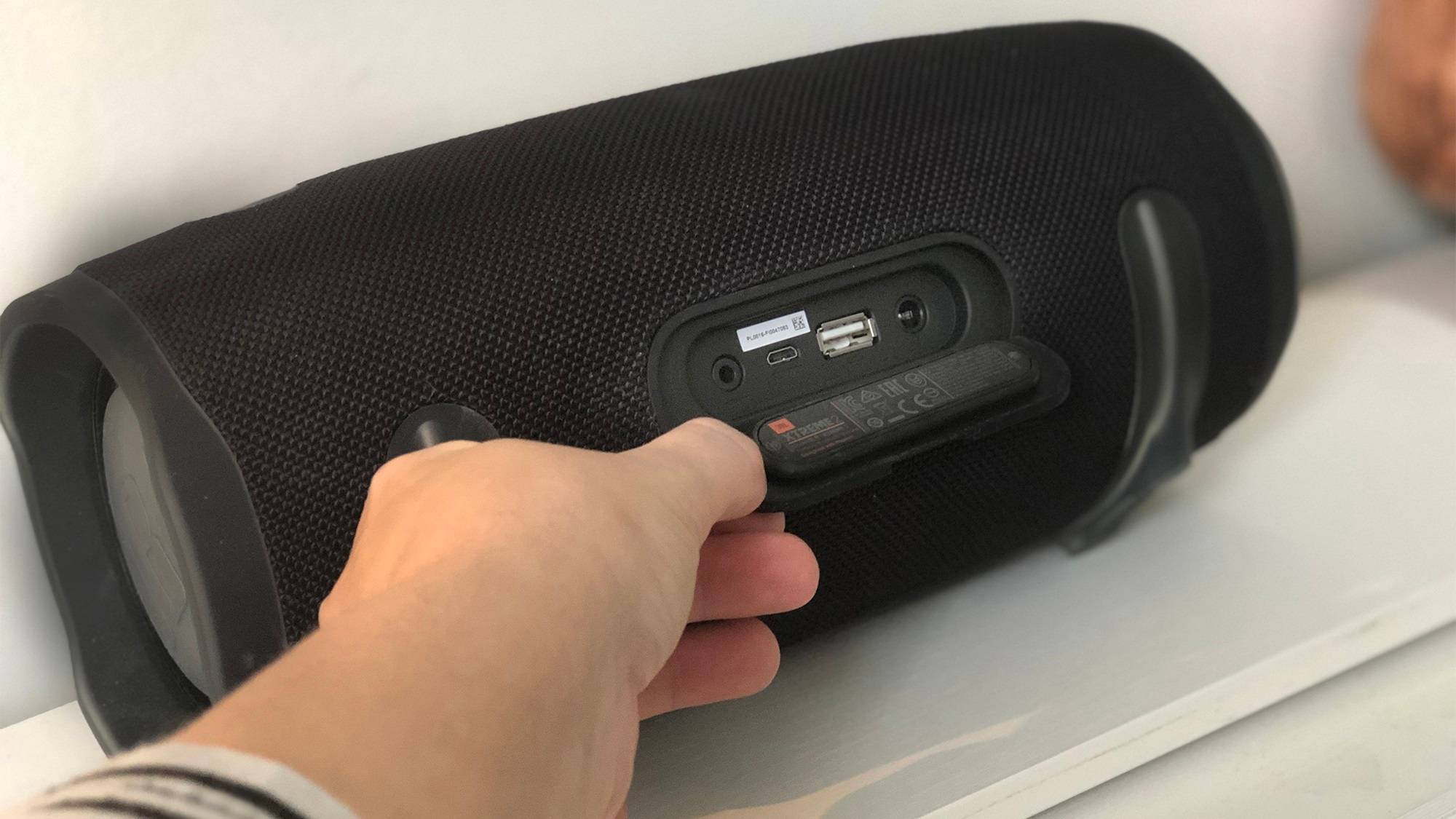
Charge your JBL speakers
How do you charge different speakers from JBL?
Charge JBL Go and JBL Go 2:
If the LED on the JBL Go flashes red, or glows solid red, it means you have a low battery and it's time to charge your speaker. You charge it by connecting the supplied micro-USB cable to the matching port on the JBL Go and the USB end of the cable to a power source – for example, a USB port on the computer or a USB wall charger which in turn is plugged into a wall socket.
Charging the JBL Flip 5 or older JBL Flip models:
To charge your Flip, plug the micro-USB cable into the speaker and a power source. To connect the micro-USB end to the speaker, open the flap that covers all connectors and insert the cable end into the matching hole. Connect the USB end to a power source, such as the USB port on your computer. You can also buy a USB wall charger to be able to charge directly from a wall socket.
Here is the manual for the JBL Flip 4 PDF
##Read more Which JBL speaker is best? We’ve done a review of the JBL Charge 3 and also several other Bluetooth speakers. [Read PriceRunner's major test of wireless speakers] (/test/Bluetooth speakers). We test the speakers individually but also in comparison with each other.